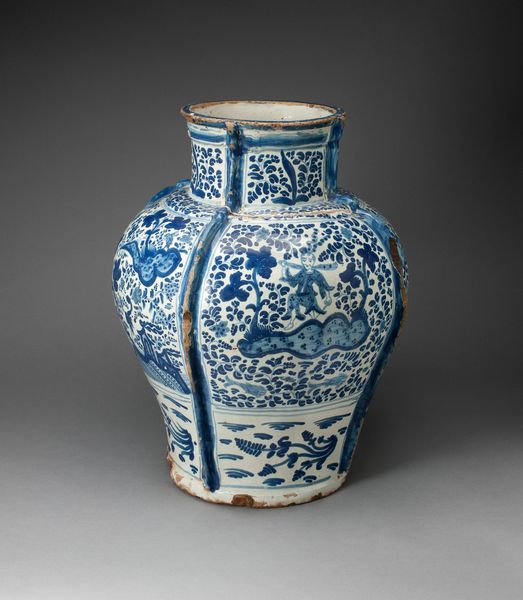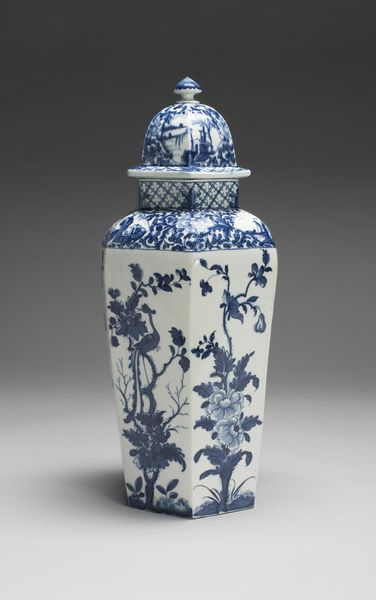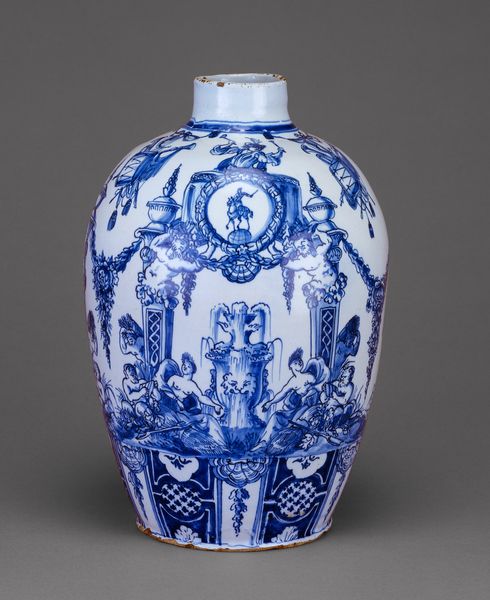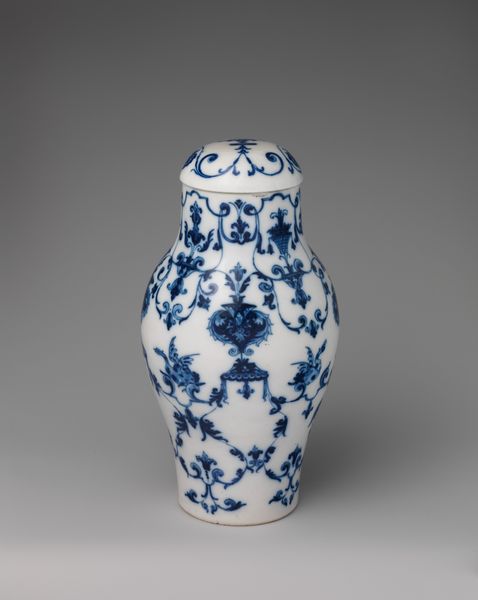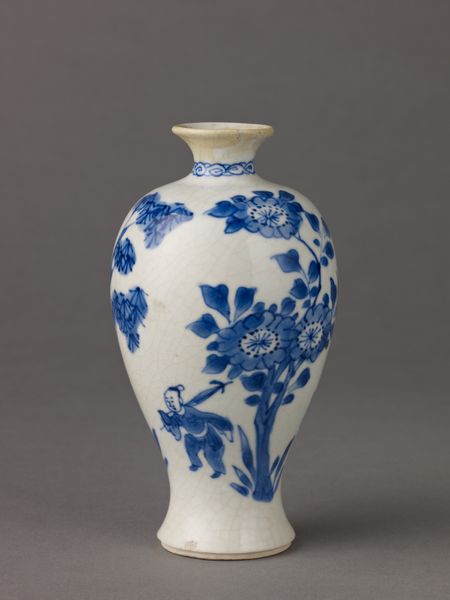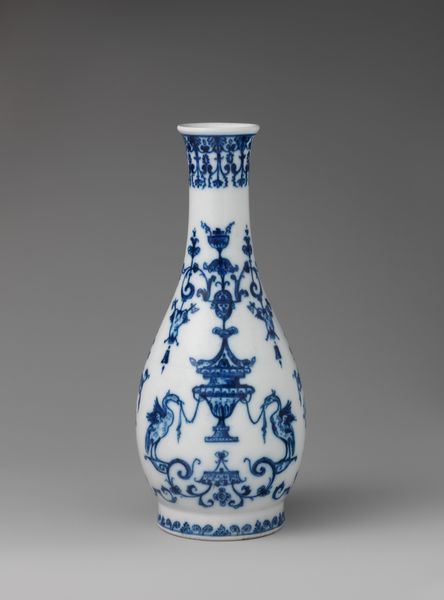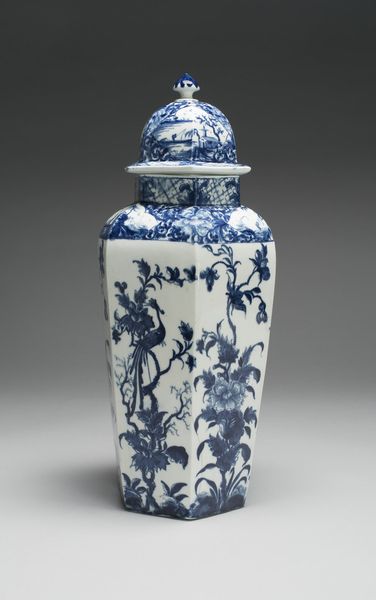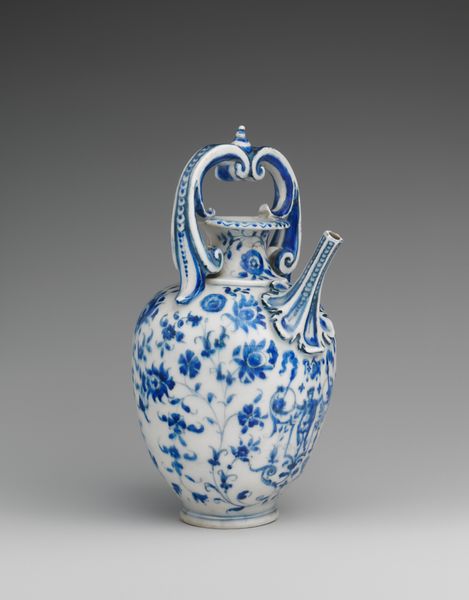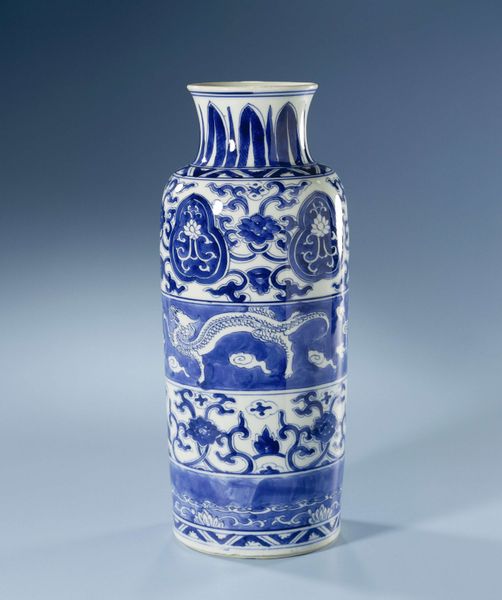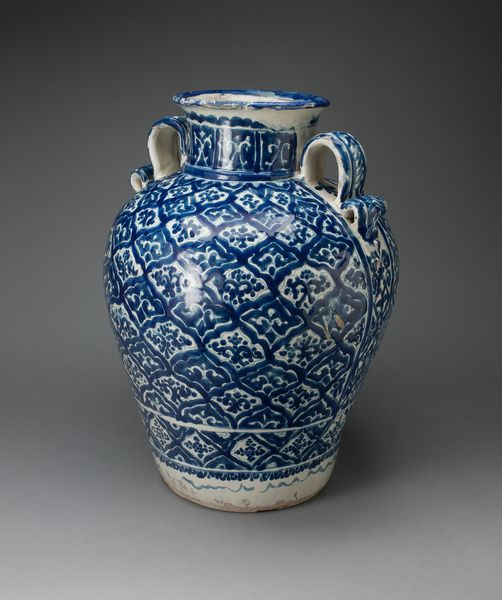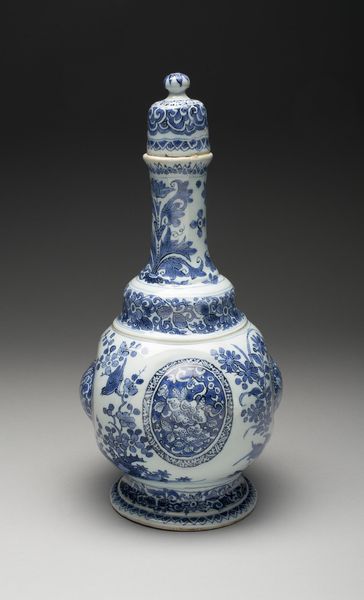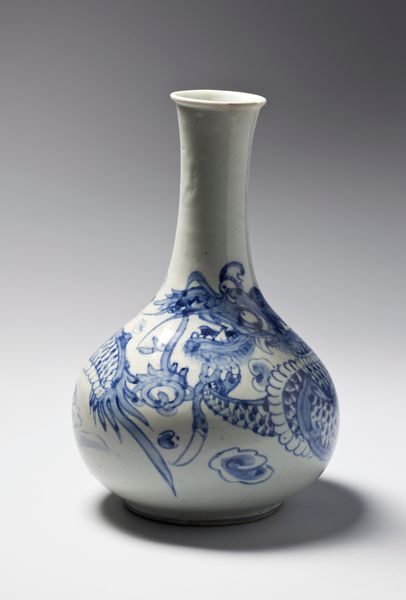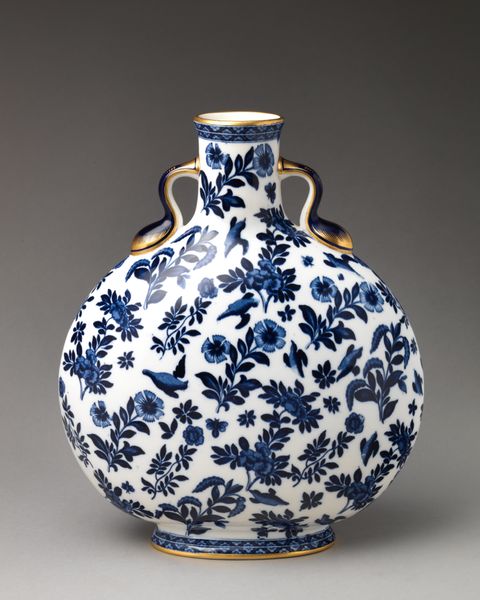
Jar with Vertical Flowing Bands and Vines with Sunflowerlike Blossoms 1700 - 1750
0:00
0:00
ceramic, earthenware
#
decorative element
#
folk-art
#
ceramic
#
earthenware
#
folk-art
#
ceramic
#
decorative-art
Dimensions: 62.9 × 50.8 cm (24 3/4 × 20 in.)
Copyright: Public Domain
Editor: Here we have a Talavera Poblana jar, made of ceramic earthenware, dating from 1700 to 1750. I’m really struck by how vibrant the blue floral patterns are against the white background. What story does this jar tell you? Curator: This piece embodies the complex intersection of colonialism, cultural adaptation, and artistic expression. Talavera Poblana, originating in Puebla, Mexico, represents a fascinating hybridity. European ceramic techniques were introduced by Spanish colonizers, but were quickly embraced and localized by indigenous artisans, as well as enslaved and free black people, shaping a distinct Mexican identity. The vertical flowing bands and sunflower-like blossoms aren't merely decorative; they are a testament to the negotiation of power and cultural exchange. How might we read these motifs as acts of resistance, reclaiming and redefining imposed forms through local narratives? Editor: That's interesting. I never considered how political something seemingly decorative could be. So the flowers and patterns are like a visual language? Curator: Exactly. Consider the sunflower. While its origins may lie elsewhere, in this context, it can symbolize resilience, mirroring the ability of local communities to adapt and thrive despite colonial oppression. Furthermore, the repetitive patterns, perhaps, speak to the laborious process of production – hinting at the often-unacknowledged contributions of marginalized artisans. Do you see other ways in which the jar’s decoration pushes back against dominant narratives? Editor: Now that you mention it, the specific color choices—that particular shade of blue—feels intentional. Almost like a quiet assertion of identity. Curator: Precisely! And how the positioning of the sunflower interacts with the more European elements, maybe there’s an intersectional voice at play. We could see it as a powerful dialogue challenging established artistic canons, decentering traditional European narratives. Editor: I will never look at decorative art the same way! There is a whole social fabric embedded in this one object. Curator: Indeed. It prompts us to question whose stories are told, whose voices are heard, and how seemingly simple objects can carry profound political and social weight.
Comments
No comments
Be the first to comment and join the conversation on the ultimate creative platform.
